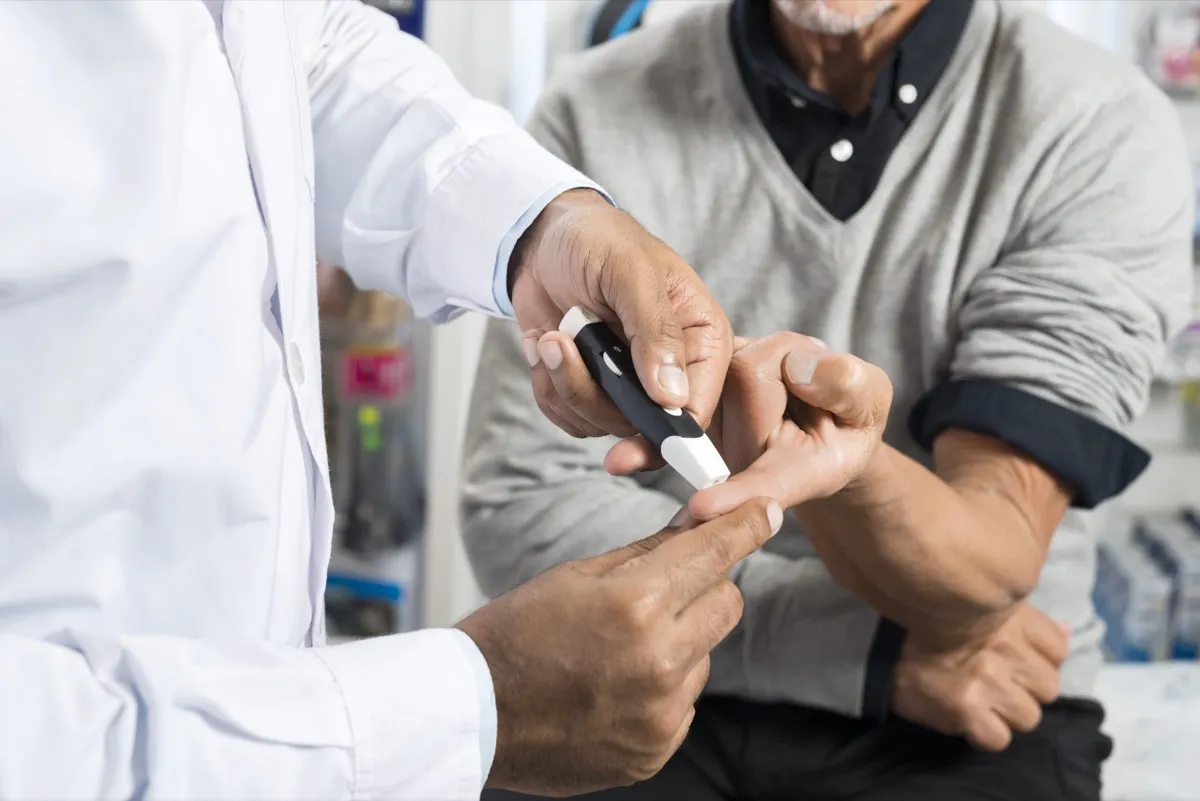Metabolic
If you notice this on your legs, get checked for diabetes now, experts say

Diabetes is a serious condition that affects your blood sugar and metabolism. And according to the Centers for Disease Control and Prevention (CDC), one in three Americans currently lives with prediabetes – meaning they’re on the cusp of developing a full-blown chronic disease.
This is particularly worrying as most people do not notice any signs of high blood sugar until they have lived with diabetes for several years. “When we diagnose someone, we assume that they have probably had diabetes for about five years,” says the endocrinologist Kevin Pantalone, DO explained via The Cleveland Clinic. It is estimated that one in four people with diabetes is unaware that they have the disease.
This is precisely why it is so important to identify the symptoms of diabetes – including those that are often overlooked. In particular, experts are now sounding the alarm about a little-known skin symptom that affects around half of diabetes patients. Read on to find out what to look for and what to do if you find it.
RELATED: If you notice this in the bathroom, this could be the first sign of diabetes.
Shutterstock
A number of skin symptoms can indicate a diagnosis of diabetes, and experts advise looking out for one thing in particular: diabetic dermopathy. You may recognize this symptom by its tell-tale pink, red, brownish, or brown spots on your shins – although they can also appear on the thighs, sides of the feet, or forearms.
According to the American Diabetes Association (ADA), diabetic dermopathy can sometimes be confused with age spots, which typically present as circular or oval lesions that affect one or both legs. In some cases, the patches may appear flaky, and if the lesions persist over time, they can be easily pressed into the skin.
RELATED: If You See This On Your Nails, It Could Be a Tell-Tale Sign Of Diabetes.
 iStock
iStock
Experts say the lesions associated with diabetic dermopathy are the result of damaged small blood vessels in the legs, although other factors can make the problem worse.
“Although the exact mechanism by which it occurs is unknown, it may be related to impaired wound healing due to decreased blood flow, local thermal trauma, or local subcutaneous nerve degeneration,” explains a 2020 study published in the medical journal Diabetes, Metabolic Syndrome and Obesity: Goals and Therapy.
 Shutterstock
Shutterstock
Skin diseases are common in diabetics, and diabetic dermopathy is particularly widespread. It is estimated that up to 55 percent of diabetics develop spots on their shins, according to the ADA. Experts note that the lesions are most common in patients whose diabetes has remained untreated for a long time. This means that by the time you show the symptom, your diabetes is likely to be significantly advanced – an unfortunately common occurrence.
“Diabetes is a relatively silent disease”, William Jordan, MD, Professor of Surgery and Head of the Department of Vascular Surgery and Endovascular Therapy at Emory University School of Medicine, told the Society of Vascular Surgery. “They don’t notice until complications arise, but then it can lead to kidney failure, peripheral artery disease, blindness, and other problems so severe that they can eventually kill.”
Sign up for our daily newsletter to have more health news sent straight to your inbox.
 iStock
iStock
When it comes to this condition, there is good news: the lesions themselves don’t pose a significant risk to your health. They shouldn’t cause itching, burning, bleeding, or pain. “Dermopathy is harmless and does not require treatment,” notes the ADA.
For those looking for cosmetic improvements, however, studies have found that certain ointments can improve the appearance of diabetic dermopathy. “Modified collagen and high glycerol lotion have shown marked improvement in skin color changes due to diabetic dermopathy,” said a recently published report.
In addition, experts say the best course of action is to try to control your blood sugar levels. Eat a healthy diet, exercise regularly, and talk to your doctor about medications or other treatments that are suitable for you.
RELATED: If You See This On Your Feet, You May Have Diabetes, Doctors Say.





